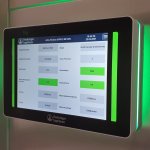
Video • Potential for all-in-one endoscopic surgical tool
Soft robot for 3D bioprinting inside the human body
Researchers at the University of New South Wales unveil prototype device that can directly 3D print living cells onto internal organs and potentially be used as an all-in-one endoscopic surgical tool.


























